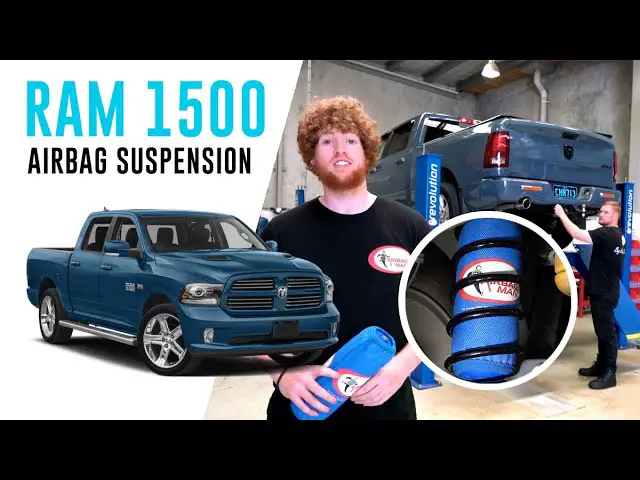What is the Spark Plug Gap on a 5.3 Vortec? Avoid Mistakes!
The spark plug gap on a 5.3 Vortec engine is 0.040 inches.
Please note that this is the recommended gap for most aftermarket spark plugs. If you are using ACDelco spark plugs, the recommended gap is 0.044 inches.
It is important to gap your spark plugs correctly to ensure optimal performance and fuel economy. A spark gap that is too wide or too narrow can cause misfires and other problems.
You can also check out this video:
Wondering why your 5.3 Vortec engine isn’t performing at its best? The answer could lie in the gap of your spark plugs. In this guide, we’ll cover:
- Tools you’ll need for gapping
- Step-by-step instructions on how to set the gap
- Troubleshooting common spark plug gap issues
- How the gap affects your engine’s performance
- Tips for maintaining optimal spark plug health
Stay tuned to find out how a simple adjustment can make a world of difference for your engine.
Tools and Equipment for Gapping
Before you roll up your sleeves, make sure you have the right tools on hand. The following equipment will make the gapping process straightforward and accurate.
Spark Plug Gap Gauge
A spark plug gap gauge is essential for measuring the gap between the electrodes. It’s crucial to use one that matches the type of spark plugs you have.
Feeler Gauge
In addition to a gap gauge, a feeler gauge can offer a secondary measurement to confirm your spark plug gap is precise. Double-checking never hurts.
Wire Bending Tool (Optional)
While not strictly necessary, a wire bending tool can make adjusting the electrode gap a breeze. If you plan on gapping spark plugs frequently, investing in one could save you time and effort.
Step-By-Step Guide to Gapping Spark Plugs on a 5.3 Vortec
Getting the spark plug gap just right is a critical aspect of engine maintenance. Here’s a detailed guide to walk you through each step of the process.
Preliminary Steps
Before you start with the actual gapping, there are a couple of steps to prepare your spark plugs for the process.
Removing the Spark Plug
First things first, you’ll need to remove the spark plug from the engine. Turn off your engine and let it cool down before you begin. Use a spark plug socket and ratchet to unscrew and carefully remove the spark plug.
Cleaning the Electrode and Ground Strap
Once removed, clean any debris or carbon deposits off the spark plug using a wire brush. A clean surface ensures more accurate gapping.
Gapping Procedure
Now that your spark plug is clean and ready, let’s move to the actual gapping procedure.
Using the Spark Plug Gap Gauge
Place the spark plug gap gauge between the center electrode and the ground strap. The gauge should fit snugly if the gap is correct. If not, you’ll need to adjust.
Adjusting the Ground Strap
To adjust the gap, gently bend the ground strap either outwards or inwards until the gauge fits snugly between the electrodes. Be cautious not to apply too much force as this could damage the spark plug.
Precautions During Adjustment
While adjusting, make sure not to touch the center electrode as it is delicate and can easily get damaged. Always focus your adjustments on the ground strap only.
Tips for Accurate Gapping
To wrap things up, here are some tips that will help you gap your spark plugs more accurately.
Importance of a Specialized Gap Gauge
While there are generic gap gauges available, using one that is specialized for your type of spark plug ensures the highest accuracy. Check the manufacturer’s guidelines to find the right gauge.
Ensuring a Clean Working Environment
A clean workspace is crucial. Any small piece of debris can cause inaccuracies in your gapping. Clean your tools and work area before you start the process.
Proper Reinstallation of the Spark Plug
Once the gapping is complete, it’s time to put the spark plug back. Screw it in by hand first to avoid cross-threading, and then tighten it with a ratchet. Avoid overtightening as it can cause damage.
Troubleshooting Spark Plug Gaps
Even with the best of intentions, things can go awry when setting your spark plug gap. Understanding common issues and how to fix them can save you time and potential headaches.
Common Issues with Incorrect Spark Plug Gap
Setting the wrong gap on your spark plugs can lead to a variety of engine issues. Here’s what you might face:
Consequences of a Too-Wide Gap
- Engine Hesitation: A too-wide gap can cause your engine to hesitate during acceleration.
- Engine Missing: You might experience intermittent pauses in engine operation.
- Reduced Fuel Economy: A larger gap means the spark has to travel further, using more fuel in the process.
- Increased Emissions: Poorly burned fuel leads to higher emissions, which is not only bad for the environment but can also result in failed emissions tests.
Consequences of a Too-Narrow Gap
- Hard Starting: A narrow gap can make your engine hard to start, especially in cold weather.
- Poor Engine Performance: You might notice a decline in acceleration and overall engine responsiveness.
- Increased Fuel Consumption: A too-narrow gap can also lead to inefficient fuel burning and increased fuel use.
Diagnosing Spark Plug Gap Problems
Knowing the symptoms is one thing, but how do you actually identify if the gap is the root cause?
Using a Spark Plug Gap Gauge
Always start with the basics: measure the gap using a spark plug gap gauge. If the gap doesn’t match the recommended settings, you’ve likely found the culprit.
Symptoms of Spark Plug Gap Issues
- Engine Misfires: One clear indicator is engine misfires, which create jerky movements or a “puttering” sound.
- Reduced Fuel Economy: If you notice you’re visiting the gas station more often, it might be time to check your spark plug gap.
- Increased Emissions: A strong smell or visible smoke are signs of higher emissions, warranting a gap check.
Correcting Spark Plug Gap Issues
So you’ve found the issue, now what? Let’s correct it.
Adjusting the Ground Strap
Just like in the initial gapping procedure, you’ll need to carefully adjust the ground strap to set the correct gap. Use the spark plug gap gauge for precision.
Reinstalling the Spark Plug
Once adjusted, reinstall the spark plug, being mindful not to overtighten.
Tips for Troubleshooting
- Double-Check Measurements: Always double-check your gap settings after any adjustments.
- Inspect for Damage: While you’re at it, inspect the spark plug for any signs of damage that may also be causing issues.
These troubleshooting tips and solutions aim to cover the most common problems you might encounter. By identifying and correcting any spark plug gap issues, you’ll be well on your way to maintaining an efficient, smoothly running engine.
Impact of Spark Plug Gap on Engine Performance
The spark plug gap might seem like a small detail, but its impact on engine performance is anything but minor. A correct gap ensures a well-timed spark that efficiently ignites the fuel-air mixture, leading to optimal combustion. Let’s look at how an incorrect spark plug gap can affect your engine’s performance.
Misfires Due to Incorrect Gap
An incorrect gap is a common culprit behind engine misfires. Misfires occur when the spark plug fails to ignite the fuel-air mixture at the right time, causing the engine to run unevenly. This is more likely to happen when the gap is too wide, as the spark may not be strong enough to travel across the gap and ignite the fuel.
Premature Ignition Risks
A too-narrow gap can cause the spark to occur too early, leading to premature ignition. This is also known as engine knocking or detonation. Over time, this can cause significant damage to your engine.
Effect on Fuel Economy
Both too-wide and too-narrow gaps can lead to poor fuel economy. In the case of a too-wide gap, the spark may be weak, leading to incomplete combustion and wasted fuel. On the other hand, a too-narrow gap can cause premature ignition, which also leads to inefficient fuel use.
Emission Concerns
Incorrect spark plug gaps can also lead to increased emissions. A too-wide gap can result in incomplete combustion, causing unburned fuel to be expelled from the exhaust. This not only increases emissions but can also lead to a failed emissions test.
Choosing the Right Spark Plugs for a 5.3 Vortec
The spark plug is a small component with a big job. Choosing the right spark plugs for your 5.3 Vortec engine is essential for achieving optimal performance, fuel economy, and longevity. Here are some factors you should consider when making your choice.
Factors to Consider
Engine Type
Different engine designs require different types of spark plugs. For instance, a direct injection engine may need a different spark plug compared to a port injection engine. Check your owner’s manual or consult a mechanic to identify the best type for your specific engine.
Fuel Type
The kind of fuel you use can also influence the type of spark plug you need. For example, an engine running on ethanol-blended fuel may require spark plugs different from those needed for an engine using regular unleaded gasoline.
Driving Conditions
Your driving conditions—whether you regularly drive in cold weather, hot weather, or dusty conditions—can also dictate the type of spark plug you need. Some spark plugs are designed to perform better under specific conditions, so choose accordingly.
Performance Goals
Are you looking for better fuel economy, enhanced engine performance, or perhaps a balance of both? Different spark plugs cater to different performance needs, so identify your priorities before making a selection.
By carefully considering these factors, you can make an informed decision about which spark plugs are best suited for your 5.3 Vortec engine. The right spark plugs can make a significant difference in how your engine performs, so it’s worth taking the time to choose wisely.
Maintenance Tips for Optimal Spark Plug Performance
Once you’ve got the right spark plugs and set the perfect gap, maintaining them is the next step for ensuring a smooth-running engine. Here are some maintenance tips to keep your spark plugs in peak condition.
Regular Oil Changes
Believe it or not, regular oil changes can have a positive impact on your spark plugs. Dirty oil can lead to fouling, which hampers spark plug performance. Stick to the oil change schedule recommended by your vehicle’s manufacturer to keep things running smoothly.
Routine Spark Plug Inspection
Every 10,000 to 15,000 miles, take some time to inspect your spark plugs. Look for signs of wear or damage such as worn electrodes or cracked insulators. If you see any signs of wear, it might be time for a replacement.
Cleaning Fouled Spark Plugs
If your spark plugs are fouled with carbon deposits or other gunk, a good cleaning can often restore them to working condition. Use a specialized spark plug cleaner and follow the instructions carefully. However, if the fouling is excessive, replacement is the better option.
Periodic Gapping
As spark plugs wear down, the gap can change. Periodically checking and adjusting the gap can help maintain optimal engine performance. Refer to your owner’s manual for the recommended gapping intervals and specifications.
Regular maintenance can extend the life of your spark plugs, improve your fuel economy, and keep your engine running efficiently. By following these tips, you ensure that you get the most out of your spark plugs for a longer period of time.
Conclusion
Keeping your spark plugs in tip-top shape isn’t just a one-time job; it’s ongoing care that pays off big time. From choosing the right spark plugs to setting the perfect gap and keeping them clean, each step ensures your engine runs like a dream. So the next time you’re under the hood, give your spark plugs the attention they deserve. Your car will thank you with smoother rides, better fuel economy, and fewer trips to the mechanic. Happy driving!






